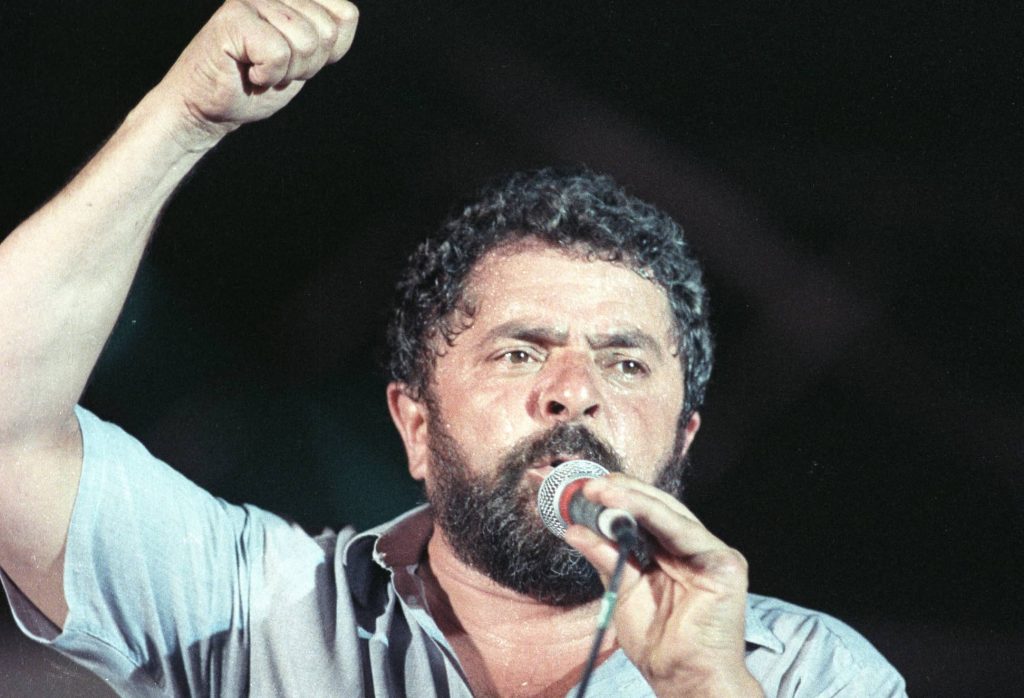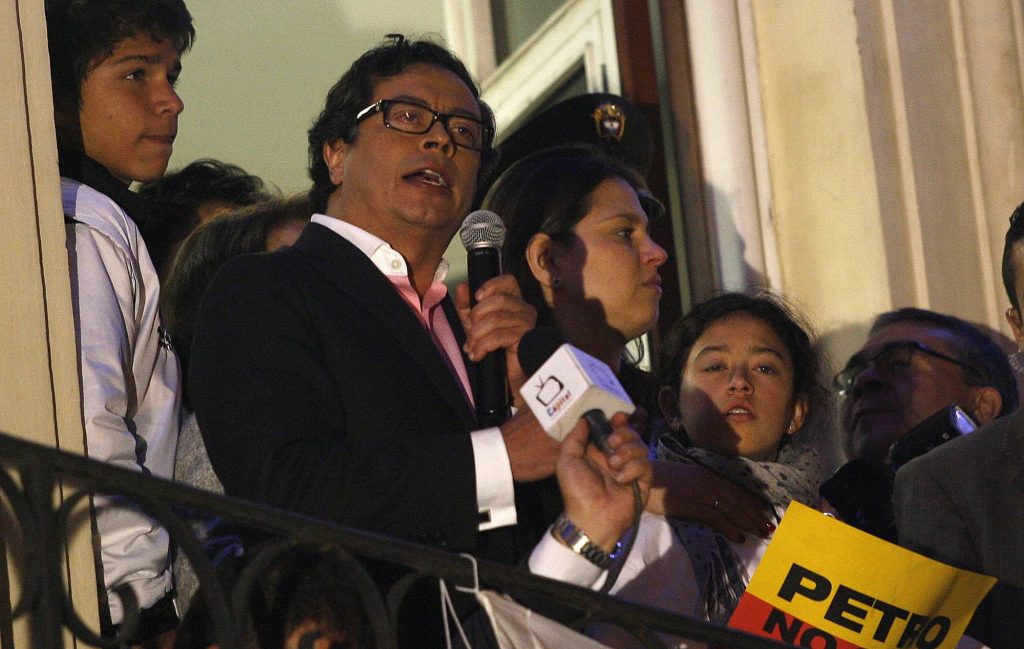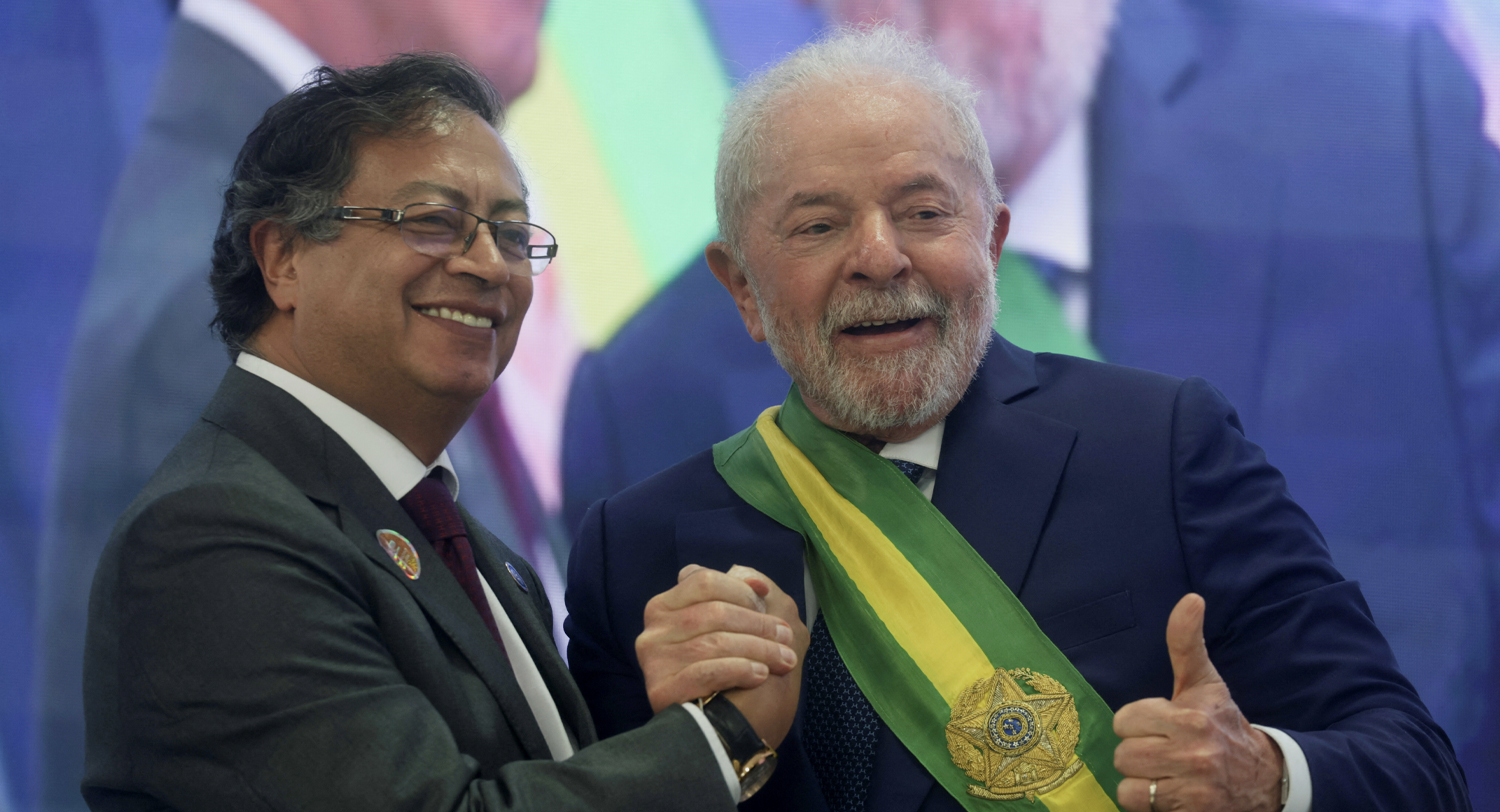The new presidents of Colombia and Brazil, the two most prominent leaders in South America, are both looking to shake up the status quo – with different playbooks.
Colombia’s Gustavo Petro takes a confrontational, boisterous, outspoken, and anti-establishment approach. Brazil’s Lula da Silva (“Lula”) is a pragmatic, conciliatory leader seeking to build broad coalitions around his policy proposals, taking a reflective approach for his third term in office. Lula is more focused on international cooperation, pushing Latin America to become more influential on the global stage. By contrast, taking over a country where his politics made him an outsider for decades, Petro is prioritizing regional and domestic concerns over global issues.
Latin America’s wealth inequality remains extremely high, and popular anger against entrenched interests helped fuel both presidents’ victories. Both leaders are using their years of political experience to navigate a new left-leaning chapter for their countries.
The First Left-Wing President in Colombia’s History
In June 2022, Gustavo Petro became President of Colombia by winning 50.44% of the vote, succeeding Iván Duque (2018 – 2022) who left office with a record low popularity. Petro’s victory was a shift away from traditional parties and the first time that Colombians elected a left-wing government. Petro’s campaign ably capitalized on the country’s widespread discontent with the traditional right-wing, center-right and center-left coalitions that had held power since early republican days. His election came on the back of massive protests in 2019 and 2021, born out of frustration with the economic and peace policies of the government of former president Duque, with a backdrop of the COVID-19 pandemic socio-economic crisis.
Petro, an economist, took an unusual route to the presidency. In his youth, he was an active member of the urban guerrilla group M-19, a far-left rebel group unaffiliated with the Soviet bloc that opposed the Colombian government. The M-19 was involved in violent acts such as kidnappings for ransom and the 1985 hostile takeover of the Palace of Justice which resulted in the killing of 94 people and around 11 disappeared. After the M-19 disbanded in 1990, as a result of a peace accord that offered political amnesty to former guerrilla members, Petro became involved in electoral politics with limited success until he was elected to the Colombian Congress’s lower house in 2006 as a member of the left-wing party the Alternative Democratic Pole. He then was elected as a senator and served from 2006-2010. He ran unsuccessfully for president in 2010 and 2018. He served as the mayor of Bogotá from 2012 to 2015.
Petro took office on 7 August 2022. His narrow victory margin has led to difficulties implementing his political agenda in his first year. However, Petro has managed to form alliances and thus gain support for his agenda from certain right-wing parties such as the Conservative Party. In exchange, this party secured ministerial posts such as Transport and Foreign Affairs. The government was recently able to push through Congress a tax reform bill, and Petro is now determined to push forward three further reforms: health, pensions, and labor. But he also suffered his first major setback in Congress on March 23, after the government withdrew a proposed bill to overhaul the political system which had faced significant opposition. It remains to be seen if the government coalition will be able maintain its leverage and strength.
Petro’s other major political goals are to move away from dependence on fossil fuels and to secure internal peace in a process described as “total peace.” Petro is seeking to negotiate simultaneously with guerrilla left-wing groups, paramilitary right-wing groups and drug cartels. If his total peace is to be successful, Petro will need to pursue national unity – a difficult task amid crippling socio-political polarization.
The Comeback, and Rough Start, of Luiz Inácio Lula da Silva in Brazil
After four very controversial years under Jair Bolsonaro, a far-right populist who led South America’s largest country from 2019 to 2022, abandoned protections of the Amazon rainforest, and mismanaged the COVID-19 pandemic while terming it just a simple flu, Lula came back to power after a very tightly contested election. Lula previously held the presidency from 2003 to 2010 and his narrow victory over Bolsonaro, in a tense runoff election, meant an abrupt shift in the political trajectory of Brazil.
Like Petro, Lula’s political career began in the 1970s when he helped to found the Workers Party (PT), a left-wing political party that aimed to represent the interest of the working class and marginalized groups in Brazilian society. During his first two terms in office, Lula implemented a number of progressive policies aimed at reducing poverty and inequality in Brazil. He expanded social programs such as Bolsa Familia, a conditional cash transfer program that provides financial assistance to poor families, and introduced policies to increase access to education and healthcare. Lula also pursued economic policies that favored domestic industry and sought to reduce Brazil’s dependence on foreign capital.

Lula’s first two terms were not without controversy. His government was implicated in several corruption scandals, including the Mesalão scandal, which involved allegations of bribery and vote-buying by members of the PT party. Lula was never personally indicted in these scandals, but his government’s reputation was tarnished as a result, which led to calls for greater transparency and accountability.
Lula began his third term on January 1, 2023 facing a divided nation and economic headwinds. Among his main challenges were slow economic growth, rising poverty, high crime rates, ongoing deforestation, climate change and an education crisis, exacerbated by his difficulty to advance his political agenda in Congress. As the 100-days marker approached in April, Lula has very little to show in the way of progress. It is looking increasingly unlikely that he will be able to fulfill his promises to reactivate and boost the economy to address Brazil’s economic and social inequalities.
One week after his inauguration, supporters of former president Jair Bolsonaro carried out a coup attempt against the three branches of government – Congress, supreme court and presidential palace – in Brasilia, the capital. Rioters attempted to violently abolish the democratic order. Nearly 2,000 people were arrested, accused of terrorism, coup d’état and violent eradication of the rule of law.
What happened in Brazil might have been inspired by the January 6 acts in the US; they shared a similar “stolen election” narrative. Lula had to spend a lot of his newly acquired political capital to negotiate with the military, to avoid the coup from prospering and to safeguard the security of the nation. He took the matter seriously and survived his first real leadership challenge. Military support for the coup didn’t materialize.
One hundred days after inauguration, Lula faces high inflation and the aftermath of the pandemic. Brazil had one of the highest tolls globally in terms of lives lost, and the pandemic-induced recession of 2020 resulted in a slow recovery with growth of only 2.9% during 2022.
Leadership styles
Petro and Lula come from different national pasts, contexts and realities, but they share a commitment to left-wing policies. Their leadership styles reflect different strategies for achieving these goals. Petro’s confrontational approach may be more effective at mobilizing social movements and challenging entrenched powered structures, fighting the status-quo and pursuing its campaign promise to bring change. Lula’s more conciliatory approach may be more effective at building broad support for policy proposals and achieving lasting change through political institutions.

As mayor of Bogotá, Petro was known for clashing with political opponents and he faced criticism for his handling of public protests and a waste management crisis. He is critical of neoliberal economic models and the influence of multinational corporations in Latin America, posturing himself as an enemy of big corporations in Colombia, especially those in the oil, gas and mining industries. His leadership style is characterized by a willingness to make bold statements on social, economic, and political issues, often in the face of significant opposition. When challenged by internal critics, he sometimes gets rid of the source – for example, firing his minister of education, Alejandro Gaviria, who questioned his health reform in February.
Lula da Silva is known for seeking to build broad coalitions and consensus around policy proposals. He is a skilled negotiator and has been credited with helping to reduce poverty and inequality in Brazil during his first two terms. His leadership style is characterized by a focus on political solutions and willingness to work within existing political systems to achieve his goals, and contrary to Petro he has not upset big corporations in the country, at least not yet.
Of the two, Petro seems to have an easier relationship with his legislature. Petro has a majority in both chambers, having gained the support of traditional right-wing parties. Lula, however, not only has a more fragmented Congress but a different relationship with both chambers. Rodrigo Pacheco, the Brazilian Senate president, is more aligned with Lula while Arthur Lira, the president of the Chamber of Deputies, is more aligned with former president Bolsonaro, and represents a roadblock for Lula’s agenda.
Lula has other challenges that Petro does not face, such as internal pressure in his own party. The PT is a coalition of very different groups, and Lula must navigate intra-party politics, which might end up limiting his scope and goal settings.
International and Regional Leadership
Lula has prioritized strengthening ties with other Latin American countries and promoting south-south cooperation, while Petro has focused more on regional priorities for Colombia and promoting peace negotiations with armed groups. Lula, beginning with his first two terms in office, has established a genuine interest in Latin American political issues. He played a role in Haiti and in Honduras (after the latter’s coup d’état in 2009). He successfully led the move to include Venezuela as a member in 2015 of the southern cone common market, MERCOSUR. He has even sought to broker peace talks on Ukraine, sending his foreign minister to meet with President Putin in Moscow on March 30 and inviting Russian FM Lavrov to Brazil April 17.
While Lula and Petro both highlight environmental policy and advocate for sustainable development, Petro has a more ambitious green agenda, calling to decarbonize the Colombian economy and seeking others to join this initiative. Lula has not expressed similar concerns for Brazil itself, and he is conscious of the role of extractive industries in helping to boost the economy.
Petro, starting with his inauguration speech, proclaimed his wishes to fight global warming and protect the Amazon. He has explicitly called other countries to action since the climate crisis is threatening humanity. Similarly, he has also questioned the war on drugs, saying that this strategy has failed and both producer and consumer countries have the responsibility to modify the strategy and understand the world drug problem as a matter of public health, not as criminal policy. He has further elaborated his vision before the United Nations General Assembly in September 2022 and at the COP27 climate summit in Egypt in November 2022.
It remains to be seen if these two presidents will join forces and provide joint political leadership for the region, and environmental leadership for the world. Brazil plays a much bigger and important role, given its size and its strategic partnerships with other regional powers such as Argentina and Mexico. Petro knows this, and this is why the Brazil-Colombia alliance, which traditionally has not been very relevant, might become more important for Petro’s ambitious goals.
Lula and Petro represent two different leadership styles. Lula’s focus on cooperation and South-South relations represent a vision of a more assertive and influential Latin America on the global stage. For now, Petro’s emphasis is on regional issues and a more inward-looking approach, prioritizing domestic concerns over global ones. The relationship between the two will not be easy, leadership styles will collide. But the fact that they both represent the Latin American progressive movement makes it likely they will seek to maintain a closeness, at least in appearance, that will strengthen the regional left.

